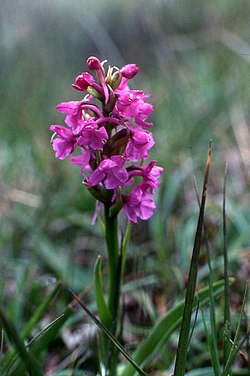| Gymnadenia borealis | |
|---|---|
 | |
| Scientific classification | |
| Kingdom: | Plantae |
| Clade: | Tracheophytes |
| Clade: | Angiosperms |
| Clade: | Monocots |
| Order: | Asparagales |
| Family: | Orchidaceae |
| Subfamily: | Orchidoideae |
| Genus: | Gymnadenia |
| Species: | G. borealis |
| Binomial name | |
| Gymnadenia borealis (Druce) R.M.Bateman, Pridgeon & M.W.Chase, 1997 | |
Gymnadenia borealis, the heath fragrant orchid, is a Palearctic orchid.
Gymnadenia borealis is found in North and Central Europe (Great Britain, Ireland and Germany). The species can be found up to 2,800 meters in altitude.